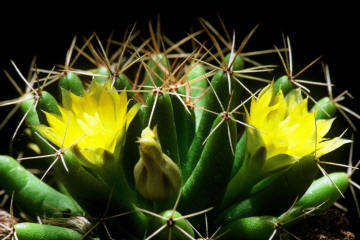-
x
Description
The tubercles are very pronounced, long, soft and flaccid. | |
| Description: At first solitary, but clustering very young and forming dense clusters to 15 cm or more broad. With 10-30(-50) braches. Stem: Spherical, green, 3-6(12 cm) cm in diameter, up to 10 tall. Without latex. Tubercles: Very long soft and flaccid 12-25 × 5-8 mm. Axil: Sparsely wooly, without bristles Radial spines: About 8 to 10 for 12 to 20 mm long white-yellowish or brown. Central spines: Usually 1 central spine, to 25 mm long, not hooked or curved, similar to radial spines. No Central spine for the var. uberiformis. Flowers: Very large for this genus, 4-6 cm. long, 4.5-6 cm. wide with bright yellow petals in May-July. , stigmas yellow. Fruit: yellowish to green. Roots: Thick taproots, large in upper portion. | |
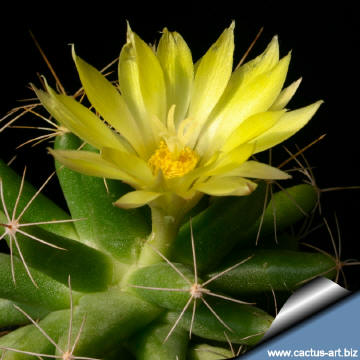 | 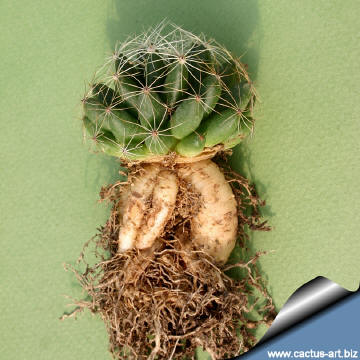 |
| . | |
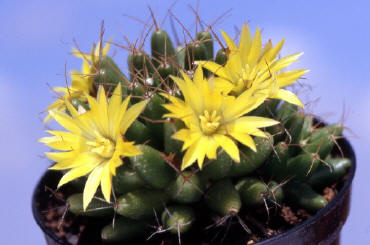 Photo and © copyright by Andrea B. (Bologna, Italy) | |
| Cultivation: An easy species that will form large clumps with age. Mammillaria longimamma has a fairly large tap root, and should be kept in a deep pot with a very draining mineral substrate. Watering during the active growing season (spring and summer); this will encourage steady growth, and prevent the large tubercles from becoming flabby. But be careful with watering, which all thick rooted species require (rot sensitive). Keep dry during the winter rest, when the plant may pull near the surface of the potting mix. Propagation: Seeds, offsets, tubercles (Tubercles can be removed from the plant, let to dry a day or 2, and planted) | |

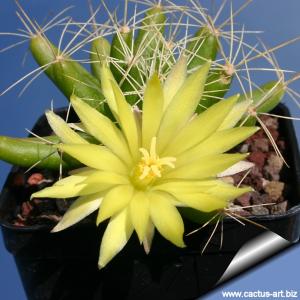
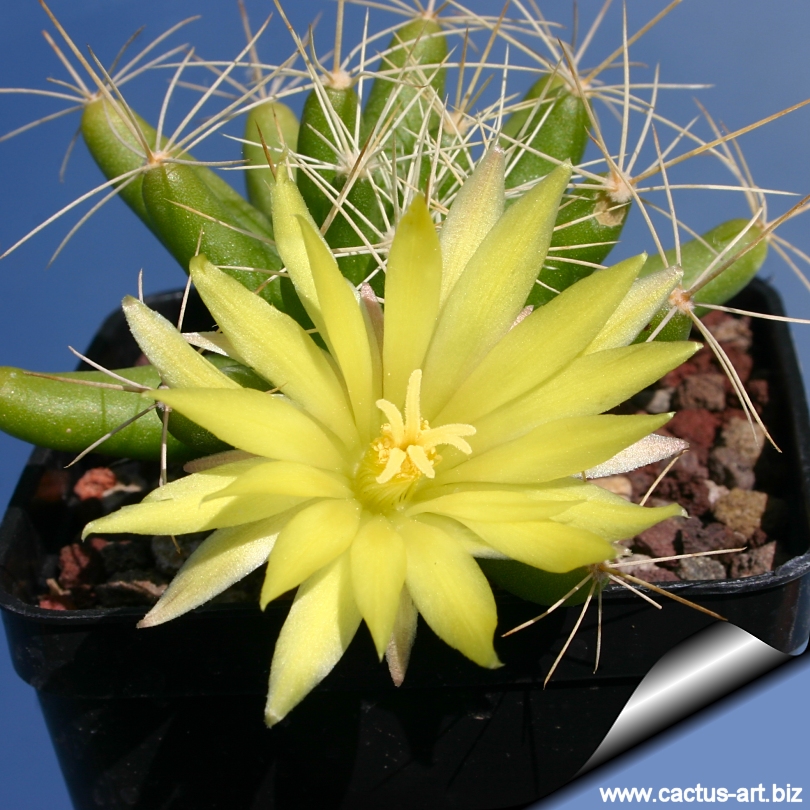 The lemon yellow flowers are very large for this genus (6 cm in diameter ) and are produced in abundance in summer.
The lemon yellow flowers are very large for this genus (6 cm in diameter ) and are produced in abundance in summer. 